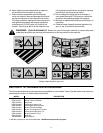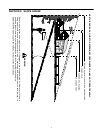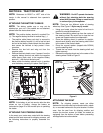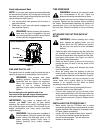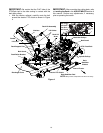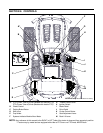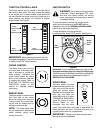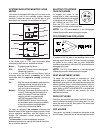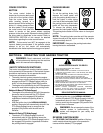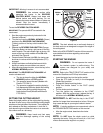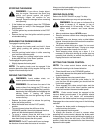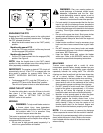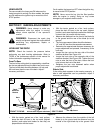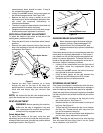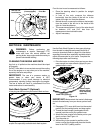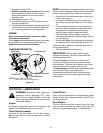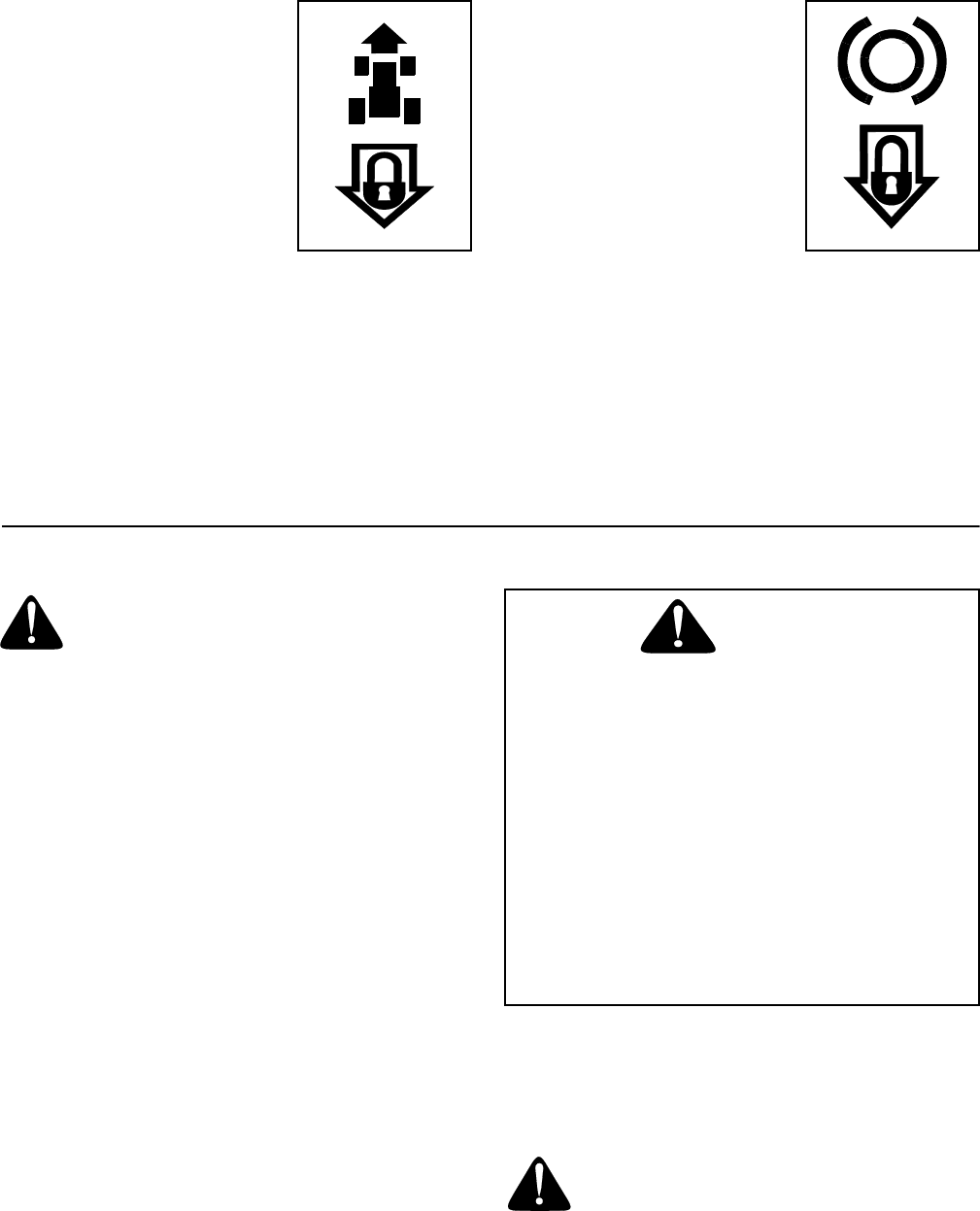
14
CRUISE CONTROL
BUTTON
The cruise control button is
located on the tractor dash panel
to the left of the ignition switch.
Push the cruise control button
while traveling forward at a
desired speed. While holding the
button in, release pressure from
the drive pedal. This will engage
the cruise control and allow the
tractor to remain at that speed without applying
pressure to the drive pedal. Depress the brake pedal or
the drive pedal to deactivate cruise control. Refer to
OPERATION SECTION of this manual for detailed
instructions regarding the cruise control feature.
NOTE: Cruise control can NOT be engaged at the
tractor’s fastest ground speed. If the operator should
attempt to do so, the tractor will automatically
decelerate to the fastest optimal mowing ground speed.
PARKING BRAKE
BUTTON
To set the parking brake, fully
depress the brake pedal and
push the parking brake button in.
Hold the button in while taking
your foot off the brake pedal. Both
the parking button and the brake
pedal will then stay depressed.
To release the parking brake,
depress the brake pedal slightly.
The parking brake button will then return to its original
position.
NOTE: The parking brake must be set if the operator
leaves the seat with the engine running or the engine
will automatically shut off.
IMPORTANT: Always set the parking brake when
leaving the tractor unattended.
SECTION 6: OPERATING YOUR GARDEN TRACTOR
WARNING: Read, understand, and follow
all instructions and warnings on the machine
and in this manual before operating.
SAFETY INTERLOCK SWITCHES
This tractor is equipped with a safety interlock system
for the protection of the operator. If the interlock system
should ever malfunction, do not operate the tractor.
Contact an authorized service dealer.
• The safety interlock system prevents the engine
from cranking or starting unless the parking brake is
engaged, and the PTO (Blade Engage) knob (or
lever) is in the disengaged (Blade Stop) position.
• The engine will automatically shut off if the operator
leaves the seat before engaging the parking brake.
Models with Manual PTO (Blade Engage)
• The engine will automatically shut off if the operator
leaves the tractor’s seat with the PTO (Blade
Engage) lever in the engaged (ON) position,
regardless of whether the parking brake is
engaged.
• With the ignition key in the NORMAL MOWING
position, the engine will automatically shut off if the
PTO (Blade Engage) lever is moved into the
engaged (ON) position with the shift lever in
Reverse.
Models with Electric PTO (Blade Engage)
• The electric PTO (Blade Engage) clutch will
automatically shut off if the operator leaves the
tractor’s seat with the PTO (Blade Engage) knob in
the engaged (ON) position, regardless of whether
the parking brake is engaged.
• With the ignition key in the NORMAL MOWING
position, the electric PTO (Blade Engage) clutch will
automatically shut off if the PTO (Blade Engage)
knob is moved into the engaged (ON) position with
the shift lever in Reverse.
WARNING: Do not operate the tractor if the
interlock system is malfunctioning. This
system was designed for your safety and
protection.
REVERSE CAUTION MODE
The REVERSE CAUTION MODE position of the key
switch module allows the tractor to be operated in
reverse with the blades (PTO) engaged.
P
AVOID SERIOUS INJURY OR DEATH
• GO UP AND DOWN SLOPES, NOT ACROSS.
• AVOID SUDDEN TURNS.
• DO NOT OPERATE THE UNIT WHERE IT COULD SLIP OR TIP.
• IF MACHINE STOPS GOING UPHILL, STOP BLADE(S) AND BACK
DOWNHILL SLOWLY.
• DO NOT MOW WHEN CHILDREN OR OTHERS ARE AROUND.
• NEVER CARRY CHILDREN, EVEN WITH BLADES OFF.
• LOOK DOWN AND BEHIND BEFORE AND WHILE BACKING.
• KEEP SAFETY DEVICES (GUARDS, SHIELDS, AND SWITCHES) IN
PLACE AND WORKING.
• REMOVE OBJECTS THAT COULD BE THROWN BY THE BLADE(S).
• KNOW LOCATION AND FUNCTION OF ALL CONTROLS.
• BE SURE BLADE(S) AND ENGINE ARE STOPPED BEFORE PLAC-
ING HANDS OR FEET NEAR BLADE(S).
• BEFORE LEAVING OPERATOR’S POSITION, DISENGAGE
BLADE(S), PLACE THE SHIFT LEVER IN NEUTRAL, ENGAGE
BRAKE LOCK, SHUT ENGINE OFF AND REMOVE KEY.
READ OPERATOR’S MANUAL
WARNING



